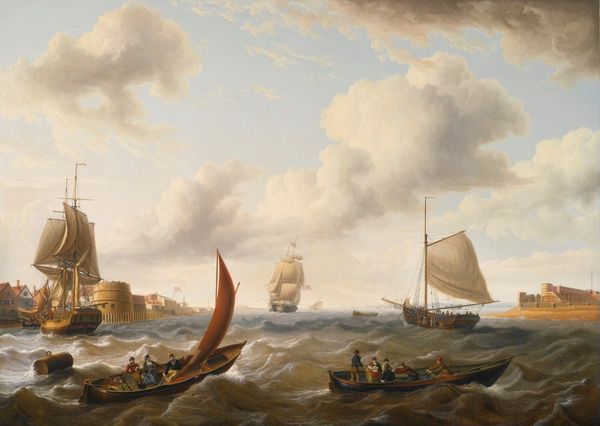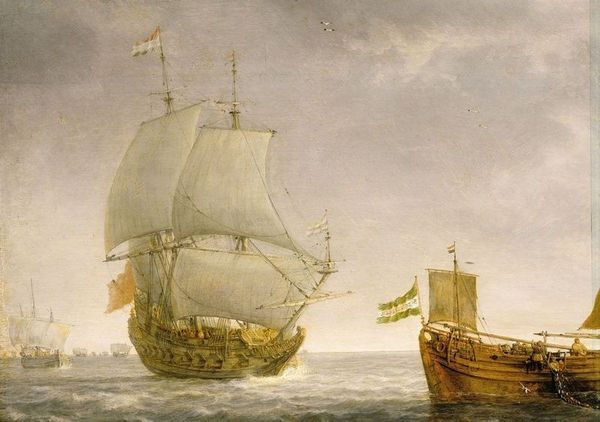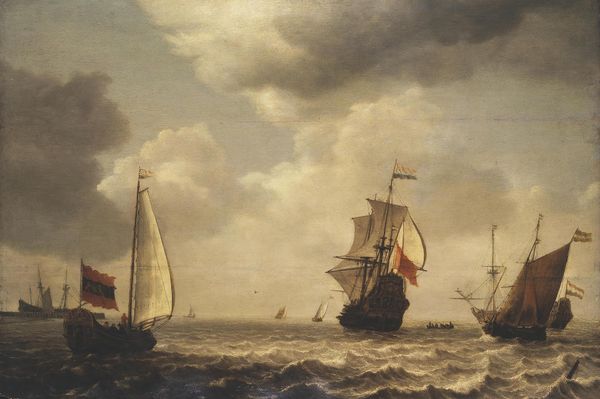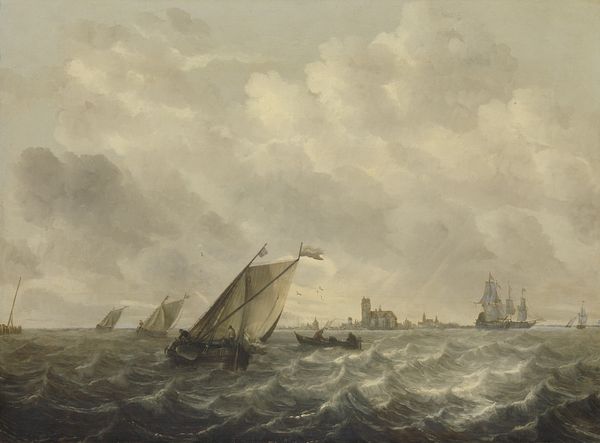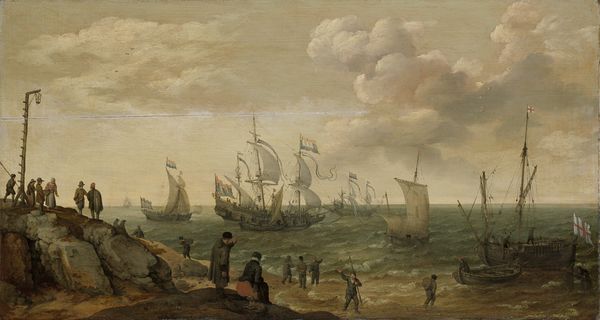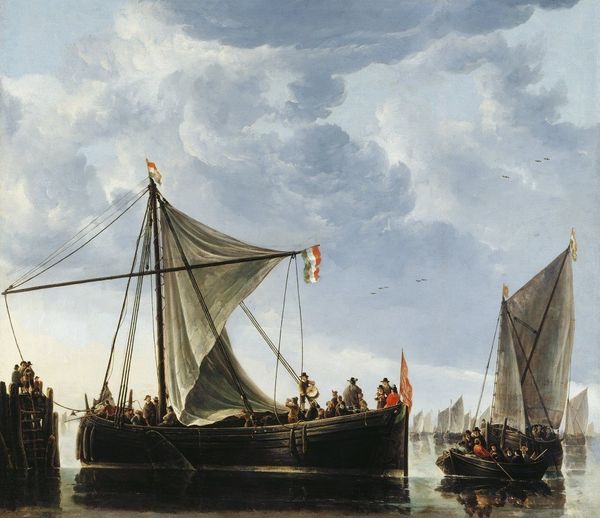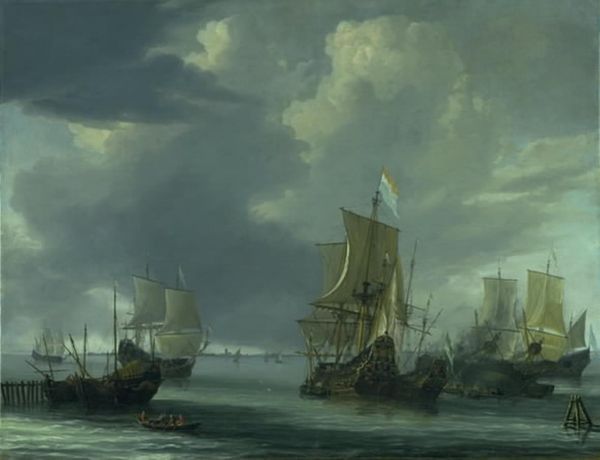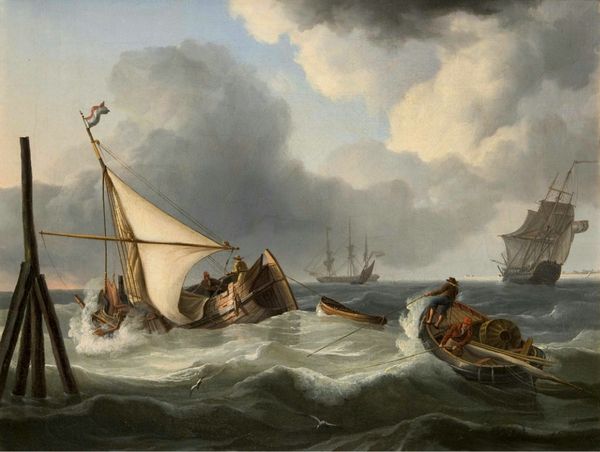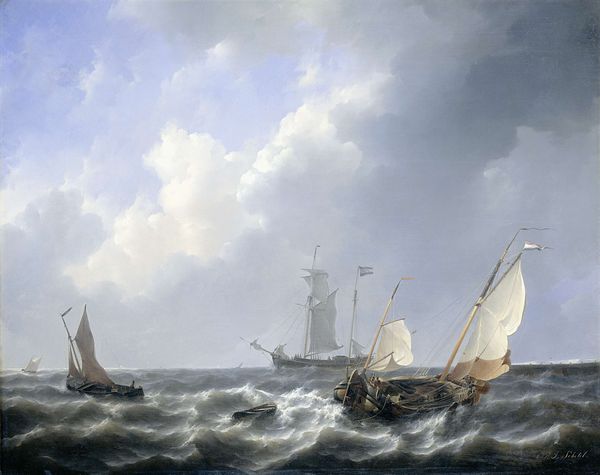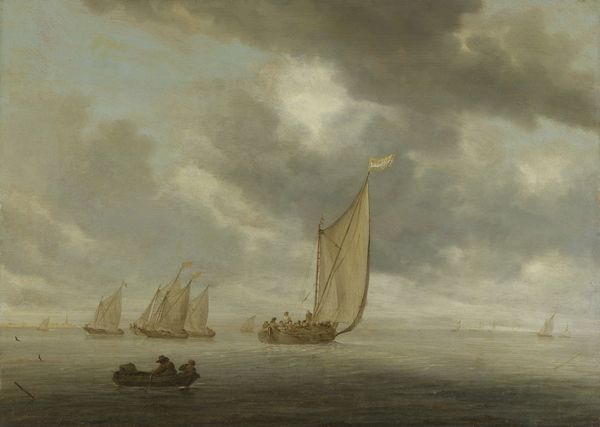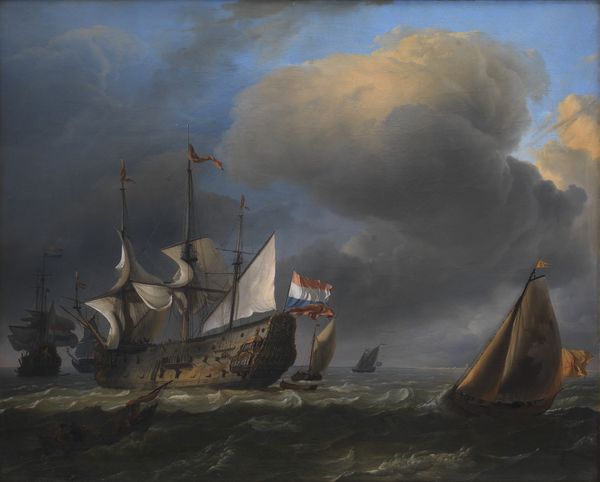
painting, oil-paint
#
baroque
#
dutch-golden-age
#
painting
#
oil-paint
#
landscape
#
cityscape
#
genre-painting
Copyright: Public Domain: Artvee
Editor: This painting, "Shipping on the Maas, Dordrecht" by Aelbert Cuyp from the early 1650s, is incredibly striking. The light on the water is gorgeous, but I'm also aware of all those Dutch flags waving – they're everywhere! How do you interpret the presence and scale of these ships within the cityscape, from a historical context? Curator: That's a keen observation. The flags immediately signal this painting's participation in a particular visual and political vocabulary. The prominence of ships wasn't merely aesthetic. In the Dutch Golden Age, the period following their independence, maritime power equalled economic and political clout. Cities like Dordrecht thrived as trade hubs. Do you think the artist included a generic cityscape, or are they capturing more about Dordrecht and its function? Editor: I think it has to be more intentional. Genre paintings don’t usually carry overt political messaging, but including the Dutch flag everywhere certainly makes you consider the might of their trading power. It’s both a cityscape and a statement of national identity, then? Curator: Precisely. Cuyp is documenting a bustling port city, but also subtly reinforcing a narrative of Dutch dominance and civic pride. Consider how the church steeple serves as an enduring symbol juxtaposed with the dynamic, mobile vessels – both vital elements of Dordrecht's identity. It also reminds viewers of their hard-fought battle for liberation and economic prosperity. Would you agree the ships evoke the feeling of freedom? Editor: I definitely agree that the painting exudes a confident and energetic atmosphere. It also showcases the country’s powerful influence in trade and global affairs. I didn't realize how much political history could be encoded in a seemingly simple genre scene. Thanks! Curator: My pleasure. By acknowledging art as socially situated, we learn about historical, political, and economic events through art. It becomes easier to read their embedded, though perhaps veiled, viewpoints and values.
Comments
No comments
Be the first to comment and join the conversation on the ultimate creative platform.
